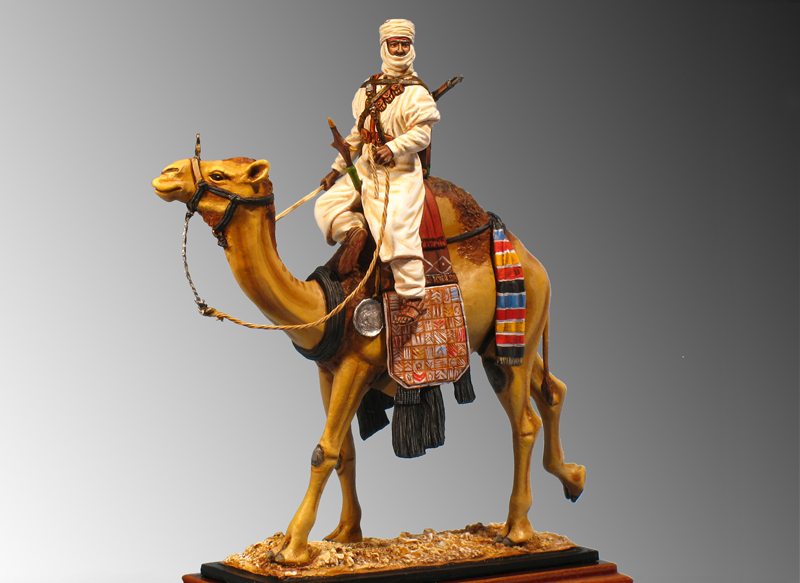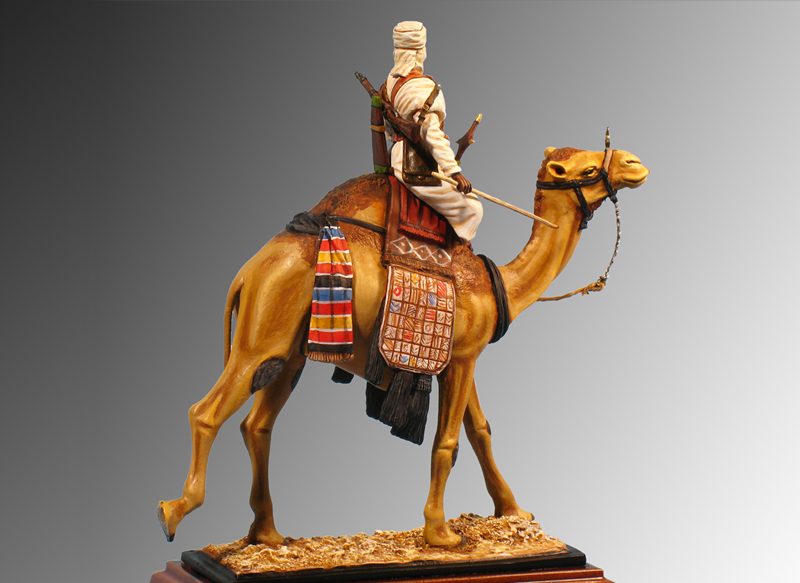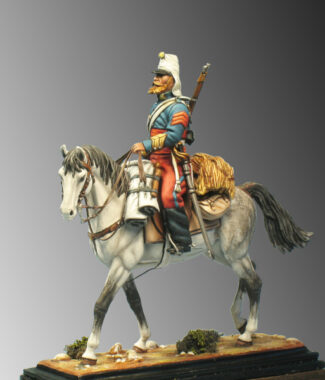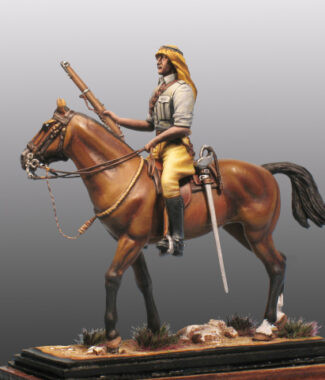From 1902 until the end of World War II, a series of small military actions were carried out in these vast territories, but large comprehensive military operations never resulted. It was about reconnaissance, policing, skirmishes, none of which involved more than a hundred men in line, on both sides.
With their local tribal links, plus their mobility and flexible tactics, the Compagnies Méharistes provided an effective means of policing the desert. A similar camel corps was subsequently raised to cover the southern Sahara, operating from French West Africa and falling within the separate Armée Coloniale. From the 1930s onwards, the Méharistes formed part of the Compagnies Sahariennes which also included motorised French and (from 1940) Foreign Legion units. Following the establishment of a French mandate over Syria in 1920, three méhariste companies were organised in that country as part of the French Army of the Levant (1).
During World War II méhariste companies, organised as “nomad groups”, saw service against Axis forces in the Fezzan and southern Tunisia. At the end of the war the Compagnies Sahariennes resumed their role as desert police. Operating in wide-ranging platoons of 50 to 60 men under French officers, they administered local laws, provided some basic medical assistance, inspected wells and reported on the state of pastures in the fertile oasis areas.
The camel-mounted units were retained in service until the end of French rule in 1962. The locally recruited méharistes were then disbanded while French personnel were transferred to other units.
The Compagnies Méharistes like the rest of the French cavalry since 1890, they carried the Berthier carbine with bolt and cartridge 8 X 50 R Lebel. Wore flowing coats (gandourah) of either white for Arab or blue for Tuareg troopers, with turbans, veils and wide black trousers (seroual). Two red sashes were worn – one wound around the waist and the other crossed on the chest under red-brown leather equipment of traditional Saharian pattern. A khaki field dress of similar cut was also worn.
French personnel wore light-blue kepis. All ranks were normally bare-footed when in the saddle, in order not to harm the sensitive upper body of their camels. The saddlery and other leather equipment was of local design and often elaborately decorated.
NOTE (1)
The French Levant corresponds to the current countries of Syria and Lebanon








Reviews
There are no reviews yet.